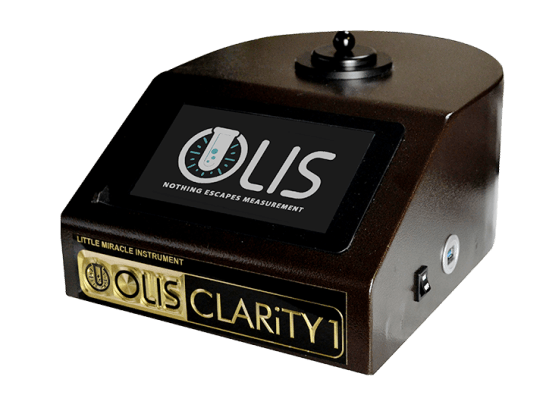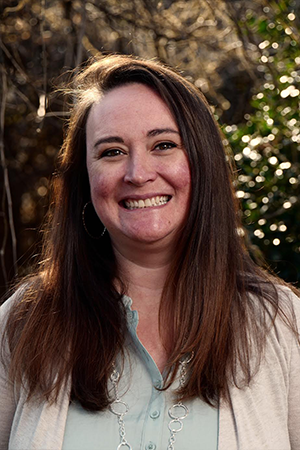Circularly Polarized Luminescence Fundamentals Explained
Circularly Polarized Luminescence Fundamentals Explained
Blog Article
Spectrophotometers Can Be Fun For Everyone
Table of ContentsThings about Uv/visSome Known Details About Uv/vis Uv/vis Can Be Fun For AnyoneAbout Uv/vis/nirUnknown Facts About Uv/vis/nirIndicators on Circular Dichroism You Need To KnowNot known Facts About Circular DichroismThe Definitive Guide for Circular DichroismSome Known Factual Statements About Spectrophotometers The 7-Second Trick For Uv/visThe Only Guide to Uv/visSome Known Details About Uv/vis/nir All about Circularly Polarized Luminescence
It is then scanned through the sample and the referral services. Fractions of the occurrence wavelengths are transmitted through, or reflected from, the sample and the reference. Electronic circuits convert the relative currents into direct transmission percentages and/or absorbance/concentration values.The transmission of a reference compound is set as a standard (datum) worth, so the transmission of all other compounds are tape-recorded relative to the initial "zeroed" substance. The spectrophotometer then converts the transmission ratio into 'absorbency', the concentration of particular parts of the test sample relative to the initial substance.
Considering that samples in these applications are not readily offered in big quantities, they are particularly suited to being evaluated in this non-destructive method. In addition, precious sample can be conserved by making use of a micro-volume platform where as low as 1u, L of sample is needed for complete analyses. A quick description of the procedure of spectrophotometry includes comparing the absorbency of a blank sample that does not include a colored substance to a sample which contains a colored substance.
What Does Uv/vis Do?
In biochemical experiments, a chemical and/or physical home is picked and the procedure that is used specifies to that property in order to derive more information about the sample, such as the quantity, pureness, enzyme activity, etc. Spectrophotometry can be used for a number of strategies such as figuring out optimum wavelength absorbance of samples, figuring out optimal p, H for absorbance of samples, figuring out concentrations of unidentified samples, and figuring out the p, Ka of different samples.: 21119 Spectrophotometry is likewise a valuable process for protein filtration and can likewise be utilized as a technique to develop optical assays of a compound.
It is possible to understand the concentrations of a two component mix utilizing the absorption spectra of the standard services of each component. To do this, it is required to understand the extinction coefficient of this mix at two wave lengths and the termination coefficients of services that include the recognized weights of the 2 elements.

What Does Spectrophotometers Mean?
Most spectrophotometers are utilized in the UV and visible regions of the spectrum, and a few of these instruments likewise run into the near-infrared Area. The concentration of a protein can be approximated by determining the OD at 280 nm due to the existence of tryptophan, tyrosine and phenylalanine (https://urlscan.io/result/3823bc3a-74b6-4d0f-8f09-522e983b4d26/).
This approach needs a spectrophotometer capable of measuring in the UV region with quartz cuvettes.: 135 Ultraviolet-visible (UV-vis) spectroscopy includes energy levels that thrill electronic shifts. Absorption of UV-vis light delights particles that are in ground-states to their excited-states.
20. 8 O.D. Ink manufacturers, printing business, fabrics suppliers, and many more, need the information offered through colorimetry. They take readings in the region of every 520 nanometers along the visible region, and produce a spectral reflectance curve or a data stream for alternative presentations. These curves can be used to check a brand-new batch of colorant to examine if it makes a match to specs, e.
The 8-Second Trick For Circularly Polarized Luminescence
Conventional visible area spectrophotometers can not spot if a colorant or the base material has fluorescence. This can make it challenging to handle color issues if for example several of the printing inks is fluorescent. Where a colorant contains fluorescence, a bi-spectral fluorescent spectrophotometer is used (https://www.cybo.com/US-biz/on-line-instrument-systems-olis-inc). There are 2 major setups for visual spectrum spectrophotometers, d/8 (round) and 0/45.
Scientists use this instrument to determine the quantity of substances in a sample. If the compound is more focused more light will be soaked up by the sample; within small ranges, the Beer, Lambert law holds and the absorbance in between samples differ with concentration linearly. When it comes to printing measurements 2 alternative settings are typically utilized- without/with uv filter to manage better the effect of uv brighteners within the paper stock.
Our Circular Dichroism PDFs
Some applications require little volume measurements which can be carried out with micro-volume platforms. As described in the applications section, spectrophotometry can be utilized in both qualitative and quantitative analysis of DNA, RNA, and proteins. Qualitative analysis can be used and spectrophotometers are utilized to record spectra of compounds by scanning broad wavelength areas to figure out the absorbance residential or commercial properties (the strength of the color) of the substance at each wavelength.

Some Ideas on Spectrophotometers You Should Know
One major aspect is the type of photosensors that are available for various spectral areas, however infrared measurement is also tough due to the fact that practically whatever produces IR as thermal radiation, specifically at wavelengths beyond about 5 m. Another complication is that numerous products such as glass and plastic soak up infrared, making it incompatible as an optical medium.
Samples for IR spectrophotometry may be smeared in between two discs of potassium bromide or ground with potassium bromide and pressed into a pellet. Where aqueous services are to be determined, insoluble silver chloride is utilized to construct the cell. Spectroradiometers, which operate nearly like the noticeable area spectrophotometers, are developed to measure the spectral density of illuminants. 2013. p. 13. Allen, DW; Cooksey, C; Tsai, BK (Nov 13, 2009). "Spectrophotometry". Obtained Dec 23, 2018. Ninfa AJ, Ballou DP, Benore M (2010 ). Fundamental Laboratory Approaches for Biochemistry and Biotechnology (2nd ed.). Hoboken: Wiley & Sons. ISBN 9780470087664. OCLC 488246403. Schwedt G (1997 ). The important guide to analytical chemistry.
Chichester, NY: Wiley. pp. 1617. ISBN 9780471974123. OCLC 36543293. Ninfa AJ, Ballou DP (2004 ). Basic lab methods for biochemistry and biotechnology. Hoboken: Wiley. p. 66. ISBN 9781891786006. OCLC 633862582. Rendina G (1976 ). Philadelphia, PA: W. B. Saunders Company. pp. 46-55. ISBN 0721675506. OCLC 147990. Oke, J. B.; Gunn, J. E.
All About Uv/vis/nir
"Secondary standard stars for absolute spectrophotometry". The Astrophysical Journal. 266: 713. Bibcode:1983 Ap, J..266..713 O. doi:10. 1086/160817. Ishani, G (2006 ). "The first commercial UV-vis spectrophotometer". p. 100. Obtained Dec 23, 2018. Simoni, RD; Hill, RL; Vaughan, M; Tabor, H (Dec 5, 2003). "A Classic Instrument: The Beckman DU Spectrophotometer and Its Inventor, Arnold O.
278 (49 ): e1. doi:. ISSN 1083-351X. Beckman, A. O.; Gallaway, W. S.; Kaye, redirected here W.; Ulrich, W. F. (March 1977). "History of spectrophotometry at Beckman Instruments, Inc". Analytical Chemistry. 49 (3 ): 280A300A. doi:10. 1021/ac50011a001. "Hewlett Packard: Compound Identification with HP 8450 A UV Visible Spectrophotometer". Analytical Chemistry. 51 (12 ): 1188A1189A. 1979-10-01.
Ninfa AJ, Ballou DP, Benore M (2015 ). Essential Laboratory Approaches for Biochemistry and Biotechnology (3, rev. ed.). spectrophotometers. Laboratory Devices.
Circularly Polarized Luminescence for Beginners
"Applied Spectrophotometry: Analysis of a Biochemical Mixture". Biochemistry and Molecular Biology Education. Journal of Biochemistry Education.
Not known Details About Uv/vis
U.S. Department of Commerce National Bureau of Standards special publication; 378. Washington, D.C.: U.S. National Bureau of Standards. p. 2. OCLC 920079.
The procedure starts with a regulated source of light that illuminates the evaluated sample. In the case of reflection, as this light interacts with the sample, some is absorbed or released. The emitted light travels to the detector, which is analyzed, quantified, and presented as industry-standard color scales and indices.
All terms are evaluated over the visible spectrum from 400 to 700 nm. In the case of transmission, when the light communicates with the sample, it is either absorbed, shown, or transmitted.
Not known Factual Statements About Circular Dichroism
Examples consist of APHA (American Public Health Association) for watercolor and pureness analysis, ASTM D1500 for petrochemical color analysis, edible oil indices utilized in food, and color analyses of drinks. The streamlined math appears like this:. Where T is the transmission coefficient. All terms are evaluated over the noticeable spectrum from 400 to 700 nm.
Image Credit: Matej Kastelic/ Dr. Arnold J. Beckman and his coworkers at the National Technologies Laboratories first developed the spectrophotometer in 1940. In 1935 Beckman established the business, and the discovery of the spectrophotometer was their most ground-breaking innovation.
Rumored Buzz on Uv/vis
Over time, researchers kept improving the spectrophotometer design to boost its efficiency. The UV capabilities of the model B spectrophotometer were improved by replacing the glass prism with a quartz prism.
After 1984, double-beam versions of the gadget were developed. The addition of external software application with the provision of onscreen displays of the spectra can be found in the 1990s. Typically, a spectrophotometer is made up of 2 instruments, particularly, a spectrometer and a photometer. A fundamental spectrophotometer includes a light source, a monochromator, a collimator for straight beam transmission, a cuvette to put a sample, and a photoelectric detector.
The Ultimate Guide To Circular Dichroism
There are various types of spectrophotometers in numerous sizes and shapes, each with its own function or performance. A spectrophotometer determines how much light is reflected by chemical elements. circular dichroism. It measures the distinction in light strength based on the overall amount of light introduced to a sample and the quantity of light beam that travels through the sample option
A spectrophotometer is used to figure out the concentration of both colorless and colored solutes in an option. This instrument is used to figure out the rate of a reaction.
Report this page